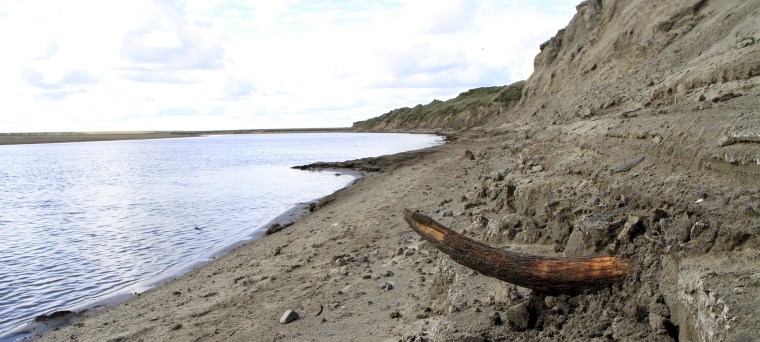The most complete genetic information assembled on woolly mammoths is providing insight into their demise. DNA analysis reveals the beasts suffered two population crashes before a final, severely inbred group succumbed on an Arctic Ocean island, leading to their extinction. Scientists on Thursday unveiled the first two full genomes of these mighty elephant relatives emblematic of the Ice Age, showing they experienced an extensive loss of genetic diversity before perishing roughly 4,000 years ago. Well-preserved DNA came from two mammoths: a 45,000-year-old calf carcass from Siberia, and a 4,300-year-old molar from a mammoth in the last population isolated on remote Wrangel Island, off the Russian mainland. Inbreeding was detected in the Wrangel Island mammoth, which was one of the last surviving woolly mammoths in the world and had a much lower genetic variation compared to the other, more ancient beast, said Swedish Museum of Natural History geneticist Love Dalen.
The woolly mammoth, about the size of today's elephants but with long brown fur and colossal tusks, first appeared 700,000 years ago in Siberia, expanding through northern Eurasia and North America. Whether their extinction resulted from a warming climate or human hunting remains hotly debated. Harvard Medical School geneticist Eleftheria Palkopoulou said the genomes indicated two major population crashes: one around 280,000 years ago from which the population recovered, and a second about 12,000 years ago, near the Ice Age's end, from which it did not. After the second one, an estimated 300 to 1,000 mammoths survived. A small Wrangel Island population existed for about 6,000 years after all mainland mammoths had died. The inbreeding probably harmed the population's viability and contributed to its extinction, Dalen said.

The researchers acknowledged the genomes could guide efforts by others to resurrect the mammoth through cloning, creating a mammoth embryo in a lab and using an elephant as a surrogate mother. Dalen said re-creating mammoths is not a goal of his research team. He also said it's "very uncertain" that it's even possible. Still, he wrote in an email, "Our genomes bring us one critical step closer to re-creating a mammoth.... I think it would be cool if it could be done, but I'm not sure it should be done."
The research appears in the journal Current Biology.
IN-DEPTH
- Clone a Mammoth? Genetics Could Aid Species, But Not in a Sci-Fi Way
- Scientists Take DNA Sample From Woolly Mammoth Leg for Cloning Project
- Clone a Woolly Mammoth? Scientists Are In It for the Long Haul